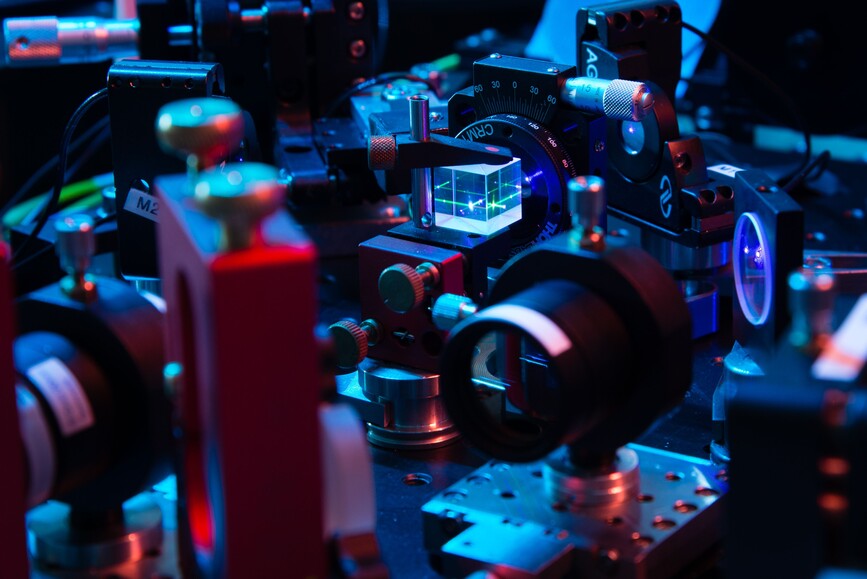The endangerment of classical encryption’s security by Shor’s algorithm requires novel security strategies. The worldwide exchange of information, which enables money transfers and messages, demands information-theoretic security in order to value both the sender’s and receiver’s privacy. Quantum Key Distribution (QKD), as a newly ascending quantum technology, promises to be an ultimately secure encryption method. QKD allows the distribution of a secure key between two distant parties, say, Alice and Bob, by exchanging quantum states. In particular, entangled photons enable the establishment of a cryptographic key due to their non-local properties, maximally secure due to intrinsic laws of quantum mechanics.
To be competitive with its classic counterparts, QKD’s ultimate goal is to increase the quantum key generation rate and ultimately outperform the high-data distribution of established classical communication links. In entanglement-based QKD however, a fundamental limit lies within the timing resolution in detecting the information carriers, here, photons. Arbitrary increasing the photon-pair production inevitably results in the detection of uncorrelated photon pairs, which increases the Quantum Bit Error Rate (QBER), ultimately decreasing the secure key rate.
In their new study, our researchers present a novel and scalable approach, namely Wavelength Multiplexing (WM), to increase the secure key rate for high-loss, long-distance QKD implementations. They exploited the wavelength correlations of polarization-entangled photons to circumvent the timing limitation of the bipartite photon detection. The researchers successfully show a highly increased speed-up of the established secret key between two parties, while its experimental realization can be implemented also in long-distance satellite-based QKD systems.
Johannes Pseiner and co-authors produced polarization-entangled photon pairs and spectrally separated them to guide the photons to two parties, Alice and Bob. At the receiver sites, both parties implemented WM, which was done via Volume Holographic Gratings (VHG), where its narrow-bandwidth reflection for incoming light aided the establishment of several wavelength-resolved channels. The scientists were then able to extract a secure key from each wavelength channel, individually, and obtained an overall higher key compared to conventional QKD protocols.
Moreover, they presented a model-based method to show the outstanding scalability performance of the WM-based QKD system, predicting an increase of the attainable secret key rate by several orders of magnitude, even for high-loss links. “The employment of wavelength-resolved quantum channels on the receiver sites via WM enables unprecedented high key rates for future satellite-based and fiber-based QKD links”, says Johannes Pseiner, PhD student at IQOQI-Vienna and first author of the paper. “Our approach solely required the receiver to implement the WM system, while the photon source, e.g., located on an in-orbit satellite, remain unperturbed, ultimately lowering resource costs. Our findings shall provide beneficial support for the design of future high-rate QKD systems in both satellite and fiber missions.”
Publikation:
"Experimental wavelength-multiplexed entanglement-based quantum cryptography" - Johannes Pseiner, Lukas Achatz, Lukas Bulla, Martin Bohmann and Rupert Ursin
https://iopscience.iop.org/article/10.1088/2058-9565/ac0519


